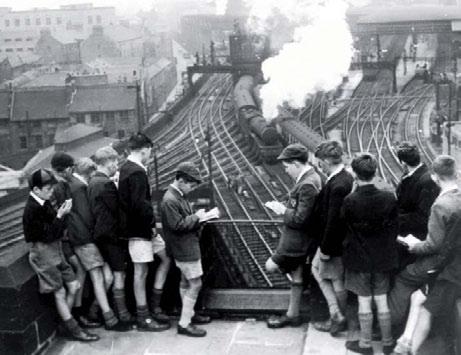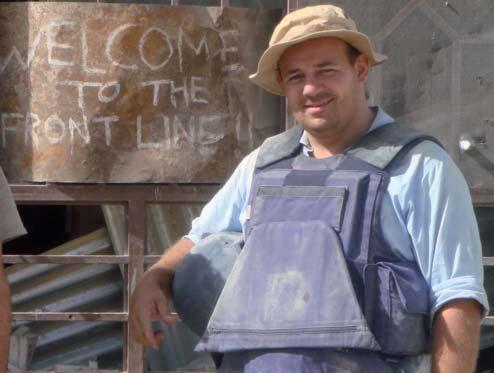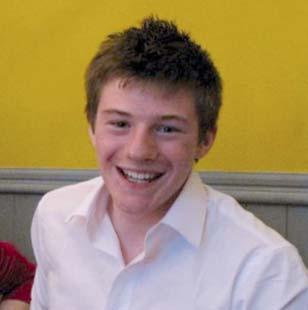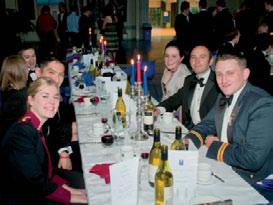
3 minute read
A History of the RGS in Ten Objects
from ONA 83
A HISTORY OFTHE RGS IN TEN OBJECTS
In this final article about the objects, David Goldwater (51-62) presents the remaining three objects
Advertisement
As part of their history lessons, students were given the challenge of naming objects 8, 9 and 10. This proved to be more difficult than first envisaged. One of the aims was to come up with something which would be popular with female students. This proved almost impossible, but here are the final three objects in our Journey through RGS History:
8
The Portrait of Cuthbert, Lord Collingwood ON
Collingwood (1748-1810) assumed command of HMS Victory, following the death of Lord Nelson (with whom he had served for over 30 years) and completed the Battle of Trafalgar. He first went to sea aged 11 and during an illustrious career, he fought in the Battle of Bunker Hill at Boston in 1775, as well as the blockade of Cadiz 1797. After Trafalgar he was raised to the peerage as Baron Collingwood of Caldburne and Hethpool in the County of Northumberland. When not at sea he lived in Collingwood House in Morpeth, a town he loved. He was buried next to Nelson in St Paul’s Cathedral. (The artist of the portrait is unknown).
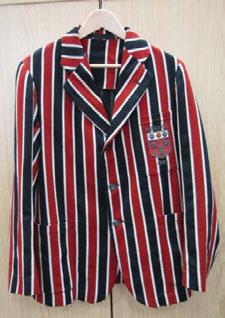
9
Full Colours Blazer
This was awarded for cricket in 1943 and is a valuable part of the school archives. It is made with traditional ‘Venetian’ striped wool and cotton fabric and unlined. The origin of the word ‘blazer’ seems to have its roots in university slang from around 1880 and referred first to the red flannel jackets worn by the Lady Margaret, St. John’s College, Cambridge, boating club. Our RGS colours blazer belonged to JamesFrederick Jameson (36-43). The badge on this blazer leads us conveniently into…
The School Crest
This was registered with the College of Heralds in 1930. In the little history of the school, The Story of our School by Mr J B Brodie and Mr A R Laws, the ‘Blason of the Shield of Arms’ is described as follows
This shield of arms symbolises the name, founder and place of the school. The chief bears a leopard of England (lion passant guardant – GRAZING, FACING THE SPECTATOR) between the title, royal when the royal arms as borne by the House of Tudor were France and England quarterly. The horses’ heads are taken from the canting – REFERRING TO THE BEARER – shield of Thomas Horsley, the founder of the school, which bore gules – RED TINCTURE – three horses’ heads erased argent – SILVER
two of the lilies of France, referring to AND APPEARING TORN AWAY. The triple-towered silver castle in base is part of the arms of the city and county of Newcastle upon Tyne, whose “most ancient armes” are three gules three castles triple towered argent.
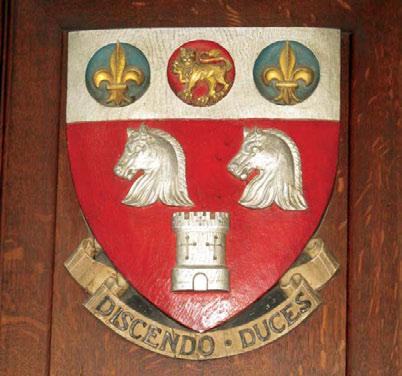
I wrote to the College of Heraldry for information on the Crest. I was promised further information on receipt of £600! Luckily Brodie and Laws’ History survives to tell the tale.
J B Brodie was Senior English Master who, in April 1914 heard the first singing of his new school song. In 1924 he joined A R Laws (Physics and Chemistry) in writing the short history mentioned above. Pupils were acquainted from the outset with the long and fascinating history of our school.
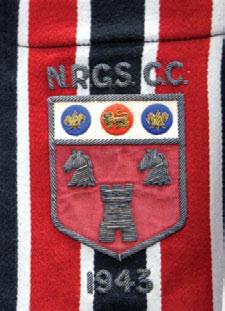
The History of the RGS in Ten Objects –a popular project which has focused on the essence of RGS history, although there were many items omitted which could equally claim their place in the (almost) half a millennium school story. Bryan Stevens (44-49) has correctly pointed out that the stained glass window and its smaller companions remained in the Rye Hill School for half a century until Lionel Markham’s appeal which commenced around 1950. They were incorporated into the present buildings in 1957, sadly after his death.
Many ON’s have suggested a ‘History of the RGS in Ten People’. Ideas, nominations, your thoughts, please, by the next deadline.


